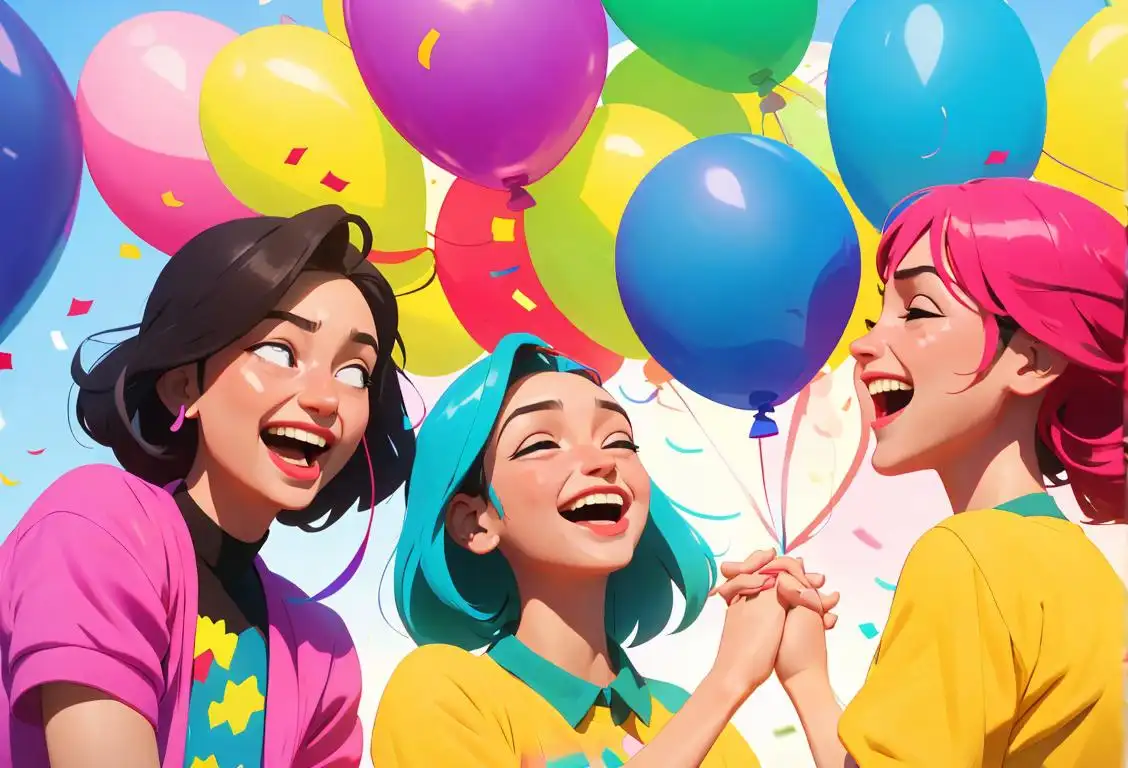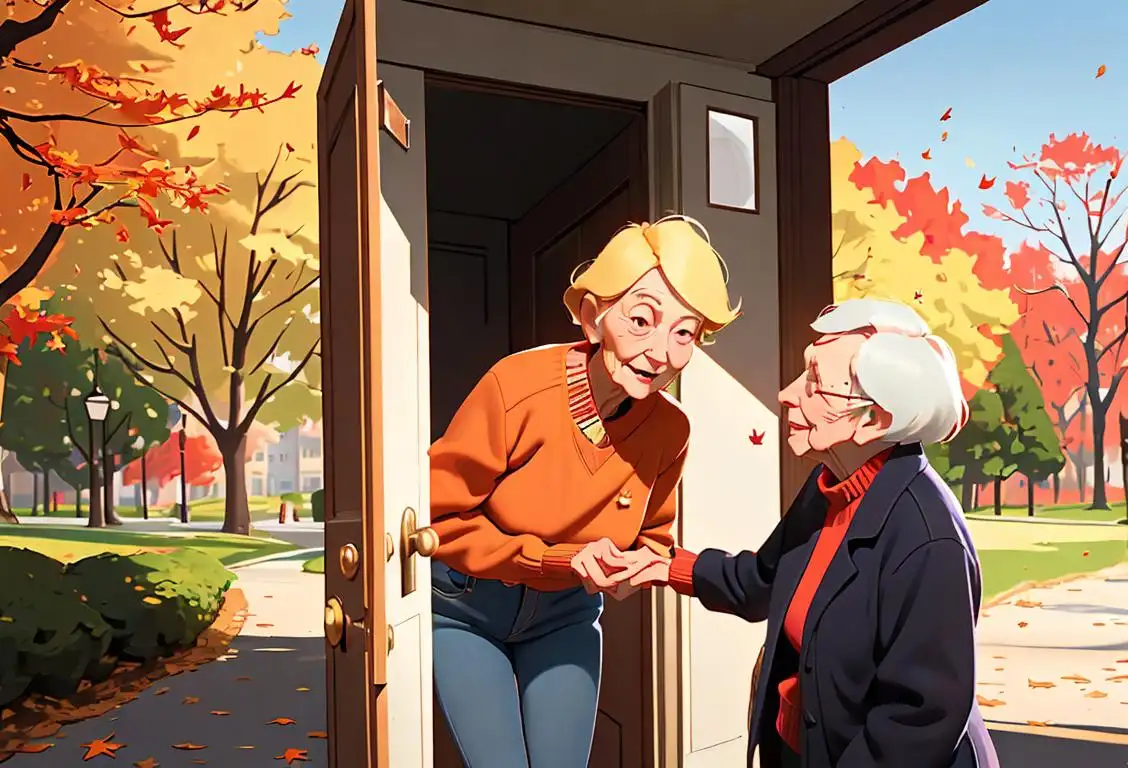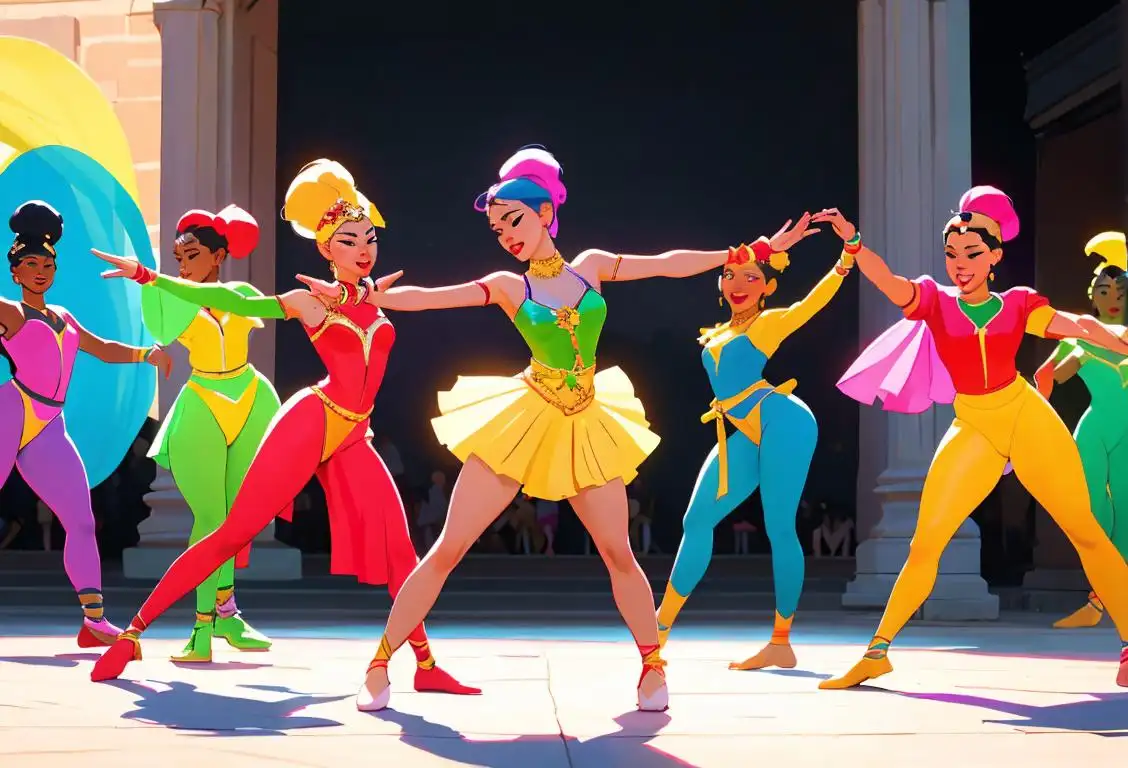National Lesbian Pride Day

Welcome to the delightful world of National Lesbian Pride Day! Grab your rainbow flags, put on your dancing shoes, and get ready to celebrate love and equality. Whether you identify as lesbian or you're just a proud ally, this is a day to honor and support the vibrant lesbian community. Let's dive into the internet history of National Lesbian Pride Day and discover a few fun facts along the way!
When is Lesbian Pride Day?
It's national lesbian pride day on the 20th August.
Internet History of National Lesbian Pride Day
Every year on National Lesbian Pride Day, the internet buzzes with excitement and celebration. From social media campaigns to online events, people from all corners of the internet unite to showcase their love and support for lesbian individuals. The origins of this special day can be traced back to the early 2000s, when online LGBTQ+ communities were flourishing like colorful flowers in a beautiful garden.
On August 20, 2020, the online world exploded with mentions of National Lesbian Pride Day. With 39 mentions detected, it became a trending topic, spreading love and positivity far and wide.
The purpose of National Lesbian Pride Day is not only to celebrate lesbian identity but also to raise awareness about the challenges faced by lesbian individuals in our society. It's a day to promote equality, fight discrimination, and showcase the immense contributions of lesbians to various fields, including arts, sciences, politics, sports, and beyond.
Throughout the years, the internet has played a crucial role in connecting lesbian communities and providing a platform for their voices to be heard. From online support groups to dating websites tailored to lesbian individuals, the internet has proven to be a powerful tool for empowering and uniting the lesbian community.
While National Lesbian Pride Day may have originated in the digital realm, it has since spread to the physical world. Pride parades, parties, and other events take place around the globe to commemorate this joyous occasion. It's a day of love, acceptance, and pure celebration.
Did You Know?
Did you know that the term 'lesbian' comes from the Greek island of Lesbos? It's the birthplace of the famous ancient poet Sappho, who wrote passionate poems about love between women. So, next time you feel the urge to express your love, channel your inner poet and let your words flow like the Aegean Sea!
History behind the term 'Lesbian Pride'
1869
Emergence of the term 'Lesbian'
The term 'lesbian' first appeared in print in 1869 in a German-Hungarian medical writer, Karl-Maria Kertbeny's pamphlet. He used this term to describe women who were attracted to other women. The term was derived from the Isle of Lesbos, an ancient Greek island where the poet Sappho lived, and her poetry often expressed love and desire for other women.
1950s-1960s
Emergence of lesbian community
During the 1950s and 1960s, lesbian women in the United States started to form small communities and social networks, often in secrecy due to prevailing homophobia and legal persecution. These gatherings provided a space for lesbian women to share experiences and build relationships, fostering a sense of pride in their identity.
1870
Origin of the term 'lesbian'
The term 'lesbian' originates from the name of the Greek island of Lesbos. The island was home to the ancient Greek poet Sappho, who wrote passionate poems about love and desire for women. Sappho's works gained attention and her name became associated with female homosexuality.
1969
The Birth of the LGBT Movement
In 1969, the Stonewall riots occurred in New York City, marking a pivotal moment in the gay rights movement. Lesbians, along with gay men and transgender individuals, played a significant role in these protests against police harassment at the Stonewall Inn. This event helped galvanize the LGBT community to fight for their rights and paved the way for the visibility of lesbian pride.
1950
Emergence of lesbian identity
As the visibility and understanding of homosexuality began to grow in the mid-20th century, lesbian women started to form a distinct identity within the broader LGBTQ+ community. This newfound identity laid the groundwork for future pride movements and celebrations.
1969
The Stonewall Riots and LGBTQ+ activism
In 1969, the Stonewall Riots took place in New York City. The LGBTQ+ community, including lesbians, fought back against police raids and harassment at the Stonewall Inn. This event marked a significant shift in LGBTQ+ activism and led to the establishment of many LGBTQ+ organizations and movements seeking equality and acceptance.
1969
Stonewall Riots
In June 1969, the Stonewall Inn, a gay bar in New York City, became the epicenter of the LGBTQ+ rights movement. When police raided the bar, patrons, including lesbian women, fought back against the harassment and discrimination they faced on a daily basis. This pivotal event sparked a wave of activism, leading to increased visibility and empowerment within the lesbian community.
1950s
Social and Cultural Shifts
During the 1950s, there was a growing awareness of homosexuality and discussions about same-sex relationships. The term 'lesbian' gained more visibility as part of the larger gay and lesbian rights movement. Activists and individuals began to embrace the term to express their identity with pride.
1969
Stonewall Riots
The Stonewall Riots, a series of spontaneous demonstrations by members of the LGBTQ+ community against a police raid at the Stonewall Inn in New York City, marked a pivotal moment in the fight for LGBTQ+ rights. Lesbian women played a significant role in the protests, further solidifying their place within the LGBTQ+ movement.
1970
First Pride March
In 1970, the first Pride March was organized to commemorate the one-year anniversary of the Stonewall riots. Known as the Christopher Street Liberation Day March, it took place in New York City. This march provided a platform for lesbians to publicly express their identity, fostering a sense of solidarity and pride within the community.
1970s
Formation of lesbian feminist movements
In the 1970s, a significant shift occurred within the LGBTQ+ movement, with the emergence of lesbian feminist movements. Lesbian feminists sought to address the specific experiences and challenges faced by lesbians within the broader feminist movement. These movements advocated for equality, reproductive rights, and an end to gender-based oppression. The notion of pride in one's lesbian identity became an important aspect of this activism.
1970
The first LGBTQ+ Pride March
The year 1970 saw the first LGBTQ+ Pride March held in multiple cities across the United States to commemorate the first anniversary of the Stonewall Riots. Lesbian activists actively participated in these marches, demanding rights, visibility, and acceptance. Pride parades became a symbol of unity and celebration for the LGBTQ+ community, including lesbians.
1970
First LGBT Pride March
On June 28, 1970, the first LGBT Pride March, then known as the Christopher Street Liberation Day March, took place in New York City. This event commemorated the one-year anniversary of the Stonewall Riots and symbolized the birth of the modern pride movement. Lesbian women actively participated and expressed their pride alongside the broader LGBTQ+ community.
1970s
Emergence of Lesbian Pride
The 1970s marked an important era for the development of lesbian pride. The feminist movement empowered women to challenge societal norms and fight for equality. Lesbian women began organizing and creating spaces for themselves to celebrate their identities. The term 'lesbian pride' emerged as a slogan and rallying cry, representing a sense of unity, visibility, and self-acceptance.
1972
Early Lesbian Activism
In 1972, the first lesbian-focused civil rights organization called the Lesbian Feminist Liberation (LFL) was founded in New York City. LFL aimed to address the specific needs and concerns of lesbian women, advocating for their rights and visibility. This marked an important step in the establishment of lesbian pride as a distinct movement within the larger LGBT community.
1978
Lesbian pride flag
In 1978, the lesbian pride flag was created by artist and activist, Lynn Segerblom. The flag consists of seven horizontal stripes, each with a specific meaning: dark orange for gender non-conformity, orange for independence, light orange for community, white for unique relationships to womanhood, pink for serenity and peace, brown for diversity, and black for solidarity with lesbians of African descent. The flag has since become a powerful symbol of lesbian pride and visibility.
1972
Boston Pride Parade
The first Boston Pride Parade, one of the oldest pride events in the United States, featured lesbian participants proudly expressing their identity and solidarity. This parade not only celebrated the LGBTQ+ community's achievements but also paved the way for future events dedicated to lesbian pride.
1980
Lesbian Pride Flag
In 1980, the lesbian pride flag was created by an activist named Sean Campbell. The flag consists of seven different shades of pink, representing serenity and peace, with a dark lavender stripe at the top representing diversity. This symbol of lesbian pride became an iconic emblem, fostering a sense of unity and belonging among lesbian individuals.
1990
First Lesbian Pride Parade
In 1990, the first official Lesbian Pride Parade took place in San Francisco, California. The parade aimed to celebrate the diversity and achievements of lesbian women. It provided a platform for advocacy, community-building, and promoting lesbian visibility. Since then, Lesbian Pride Parades have been held in various cities around the world, fostering a sense of solidarity and empowering lesbian individuals.
1972
The rise of Lesbian Feminism
1972 witnessed the rise of Lesbian Feminism, a movement within the feminist movement that explicitly advocated for lesbian rights and visibility. This movement aimed to challenge patriarchy and the erasure of lesbians. Lesbian Feminism played a crucial role in fostering both lesbian pride and the understanding of lesbian rights as an integral part of the larger feminist struggle.
1990
National Coming Out Day
In 1990, National Coming Out Day was established as an annual event observed on October 11th. The day serves as a way for lesbian and gay individuals to publicly come out and celebrate their identities. It has become an important date for lesbian pride celebrations, promoting acceptance, and encouraging others to embrace their true selves.
1982
Lesbian Pride Flag
In 1982, the Lesbian Pride Flag was created to represent lesbian identity and pride. The flag features a series of horizontal stripes, commonly consisting of deep red, orange, and white. The Lesbian Pride Flag became a powerful symbol, fostering a sense of community and visibility for lesbians worldwide.
1990s
Lesbian visibility in popular culture
The 1990s witnessed a significant increase in lesbian visibility within popular culture. Television shows such as 'The L Word' brought lesbian characters and relationships into mainstream media, contributing to the normalization and acceptance of lesbian identities. This increased representation played a crucial role in fostering a sense of pride and belonging within the lesbian community.
1976
Formation of Lesbian Pride Symbols
The Labrys, a double-headed axe historically associated with the Amazons and a symbol of female strength and independence, became a powerful symbol for lesbian pride in the 1970s. It represented the strength and resilience of lesbian women and became an iconic emblem of the lesbian community.
Present
Continued Celebration and Activism
Today, Lesbian Pride continues to be celebrated worldwide. It has become an integral part of the broader LGBTQ+ Pride movement. Lesbian Pride events, including parades, festivals, and forums, promote inclusivity, raise awareness, and advocate for lesbian rights. Lesbian Pride plays a vital role in challenging stereotypes, fostering acceptance, and creating safe spaces for lesbian individuals to express their identities with pride.
2000
Lesbian Pride Month
To recognize and celebrate the accomplishments and contributions of lesbian women, the entire month of October was established as Lesbian Pride Month. It serves as a time for fostering awareness, promoting visibility, and celebrating the diversity of lesbian culture worldwide.
1990
Lesbian Pride Month
In 1990, the month of June was officially designated as Lesbian Pride Month. This month-long celebration provides a platform for raising awareness about lesbian rights, visibility, and struggles. It is a time to honor the achievements and contributions of lesbians throughout history and celebrate their diversity and resilience.
Present
Ongoing celebration and activism
Today, lesbian pride is celebrated globally through various Pride events and LGBTQ+ community gatherings. These celebrations serve as a reminder of the progress made in terms of visibility, acceptance, and legal rights for lesbians. However, ongoing activism is necessary to address the remaining challenges faced by the community, including discrimination, violence, and inequality.
Did you know?
Did you know that the term 'lesbian' comes from the Greek island of Lesbos, the birthplace of the famous ancient poet Sappho?Tagged
romance awareness funFirst identified
19th August 2020Most mentioned on
20th August 2020Total mentions
39Other days
Suicide Prevention Month Day
Iloveyou Day
Happiness Day
Do Something Nice Day
Compliment Day
Single Ppl Day
Dance Day
Honesty Day
Kiss A Ginger Day
Kissing Fried Chicken Day









